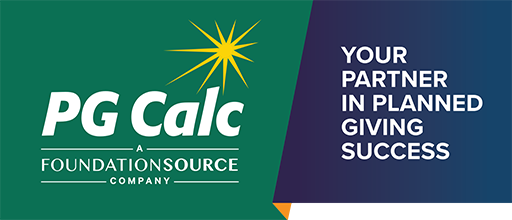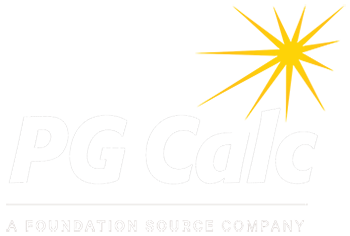Featured Articles
PG Calc publishes monthly articles on the latest topics in planned giving.
How to Get Volunteers Talking About Bequests
-This document is derived from one we created for a consulting client. In conversations with that client we wanted to ensure that they were augmenting an excellent marketing effort with on-the-ground cultivation and solicitation. To add to the ranks of a bequest society, a planned giving officer often needs volunteers to help, and volunteers are more willing if they are informed enough to be comfortable. The best volunteer solicitors are ones who have made a gift, but there is still a gulf between making a gift and feeling prepared to ask another to do the same.
Why Analytics for Planned Giving Saves Time and Raises More Money
-Analytics, or the discovery and use of meaningful patterns in data, can be one of the most powerful tools at your disposal to refine your marketing efforts. Analytics helps predict individuals’ behavior, for example finding prospects most likely to make a planned gift. When you are preparing for a big campaign, or anytime you are faced with a large list of prospects, analytics can identify people you might have passed over as well as those with whom you should not waste time. In short, marketing informed by donor analytics will be more successful and more cost effective.
The "Shark Fin" Lead Trust
-We have responded to many more client inquiries about charitable lead trusts over the past two years than any other two year period in our 25-year history. We have also noticed a flurry of articles on lead trusts during this same period.
A particular lead trust variation that has received considerable attention lately is what some practitioners are calling the "Shark Fin" lead trust. You may have also seen the term "Balloon" lead trust mentioned. Two names, same trust.
When Discount Rate Waters Are Shallow, Cast a Wider Net
-It’s definitely a new day for gift planners and possibly even the dawn of a new era, if the current economic climate persists. Significantly, that climate features not only depressed stock values but also low interest rates, which translate into the low monthly IRS discount rates used in calculating the tax aspects of various planned giving vehicles. Still, many donors continue to have the motivation and capacity to make large charitable gifts. The challenge is to maximize their options, including – when appropriate – acquainting them with novel approaches. In certai
Poof! Tax Concerns That Vanish with Gifts Made upon Death
-A donor who is thinking of making certain gifts during life needs to pay attention to various requirements to ensure he can claim an income tax charitable deduction. When the same gifts are made upon death, however, these same requirements do not apply – or at least not in the same way.
Supplementing Retirement Income with a Planned Gift
-Life income gifts offer solutions to a variety of donor situations that an outright gift cannot address. One situation they can address very nicely is a donor's desire to supplement retirement income with additional cash flow. From a development point of view, the techniques we are about to discuss have the added benefit of widening the pool of prospects to which your planned giving program can appeal.
Pooled Income Funds - You got to know when to hold 'em, know when to fold 'em
-So, you have a pooled income fund (PIF). How’s your fund doing? We hear a variety of stories from our clients. Some clients have PIFs that are doing well, but many others are looking for ways to close their PIF. Once upon a time, when PIFs were in favor, their attraction was in their relative simplicity compared to charitable remainder trusts. No trust document was needed because it was already in place; the documentation was a simple one or two page Instrument of Transfer. A second advantage of the PIF was the relatively low cost of administration. Charitable remainder trusts require the creation the filing of tax and informational returns for each individual trust. In contrast, the charity was required to file only one set of returns for a PIF, regardless of the number of participants. The reporting requirements to the participants involved a relatively simple Schedule K-1. A third advantage of PIFs was that they could accept smaller contributions than charitable remainder trusts. These features made the PIF arguably the most popular form of life income gift in the 1980s and early 1990s. Oh, how times have changed!
Gifts Funded with Multiple Assets
-While most planned gifts are funded with a single asset, typically cash or a single block of long term appreciated securities, it is not unusual for a donor to create a planned gift using a combination of assets. The combination might be a single block of long term appreciated securities plus cash, or a block of long term appreciated securities plus a block of short term appreciated securities, or cash plus long term appreciated mutual fund shares and short term appreciated mutual fund shares.
Analyzing Your Planned Giving Program
-All organizations with a planned giving program make a point of counting how many planned gifts they receive each year and totaling their face value. Most divide up this information by type of gift: realized bequests, gift annuities, charitable remainder unitrusts, etc. You can gain valuable insight into what gifts and what types of donors are driving a planned giving program from even these simple statistics.
Revocable Gifts
-There are a variety of ways that a donor can make a commitment to your charity of an end-of-life gift that she can modify later or cancel altogether, if necessary. This sort of flexibility can be of great comfort to a donor who is nervous about her financial future, but wants to act on her desire to support a charity.

